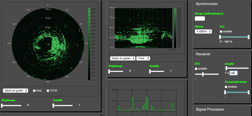This article will explain the importance of Competency Based Training and the role it plays in the preparing ATCO and ATSEP students for their jobs.
With the safety and lives at stake of many, including pilots, fellow colleagues, passengers, airport personnel, and essentially anyone on the ground below where aircraft is flying, ATCO and ATSEP candidates need to be exceptionally well-trained and suited for such work. Generally, these professionals will undergo many hours of training before they can be allowed to work in a live environment, even with supervision. As these students begin their training, they are typically taught the fundamentals through traditional learning methods. However, because there needs to be assurance that these students can put their newly learned skills to work and be competent in doing so, their competencies must be assessed.
What is Competency Based Training?
Competency Based Training (CBT) plays an integral part in the training of ATCO and ATSEP candidates. It is not enough to learn by reading a textbook, listening to a lecture, and then taking a written test to become licensed to work. ATCO and ATSEP candidates must be able to hone their job-related skills through practice and show that they have obtained the level of skill needed to perform their jobs. But what is CBT and how does it differ from what we know as traditional time-based methods of learning?
- Skill, which is a task or multiple tasks that require a certain level of competency in manipulation instruments or equipment in the case of ATCO or ATSEP trainees.
- Competency where a skill is performed to a specified standard under a specified environment, such is the case with unit training for ATCO and ATSEP to familiarize them to the environment in which they will be working.
A simple understanding of CBT includes the following competencies:
- Cognitive knowledge of the subject matter
- Procedural knowledge on how to implement it
- Psychomotor skills on applying it
- Interpersonal/social competencies to apply it
- Personal competence to behave as an upright employee with the integrity to handle the responsibilities associated with the job
What are the Characteristics of CBT?
A CBT program should feature individualized training that fits the specific competencies required for each particular ATCO or ATSEP profile. Competencies should:
- Be based on an analysis of the professional responsibilities required for the position
- Describe the expected outcomes for the position’s related functions, including required knowledge, skills, and behavior that are considered essential in performing those functions
- Should feature statements that facilitate criteria-based assessments
- Be treated as tentative predictors for work effectiveness and be subject to continuous validation procedures
- Specified and made public before instruction begins
- Allow for trainees that complete the program to demonstrate a wide range of competencies
Unlike traditional time-based methods of learning, CBT learning programs, like those that ATCO and ATSEP trainees participate in feature:
- An instruction program that stems from and is linked to specific competencies; e.g. competencies required for specific ATSEP profiles
- Instruction that supports the development of competencies in a program that is organized into manageable-sized units
- Organizing and implementing instruction according to the trainee’s style of learning, perceived needs, pacing and sequence preference
- The ability to determine the trainee’s progress through demonstrated competence
- Keeping the trainee advised of his progress throughout the training program
- The review and revision of instructional specifications based on feedback
The Role of Models and Simulations in CBT
 Models and simulations are crucial to CBT programs. Just as a hospital would not subject a live patient to surgery performed by a medical student that has not gone through clinical training practicing on models, ATCO and ATSEP trainees would not train in a live environment either.
Models and simulations are crucial to CBT programs. Just as a hospital would not subject a live patient to surgery performed by a medical student that has not gone through clinical training practicing on models, ATCO and ATSEP trainees would not train in a live environment either.
This brings the need for equipment that is capable of replicating the equipment and environment that the ATCO or ATSEP will be working in, along with simulating scenarios that can be expected and anomalies that could possibly occur.
Assessing and Evaluating Trainees in CBT
Traditional learning relies primarily on giving students knowledge-based tests to measure their mastery of information they have learned. This testing method can be used in CBT. However, a CBT program is geared to focus on measuring mastering skills, which is assessed through simulation performance tests that normally include a type of rating scale or checklist of competencies to be met.
References
- More articles on ATSEP training in accordance with ICAO 10057 (2018 - today), by Dawn M. Turner, Dennis Vasilev, Prof. Eric Moskwa, Dr. Ulrich Scholten and more
- More articles on Radar Training Systems (2018 - today), by Dennis Vasilev, Dr. Ulrich Scholten and more
- Manual on Air Traffic Safety Electronics Personnel, Competency-Based Training and Assessment DOC 10057 (2016), by ICAO





